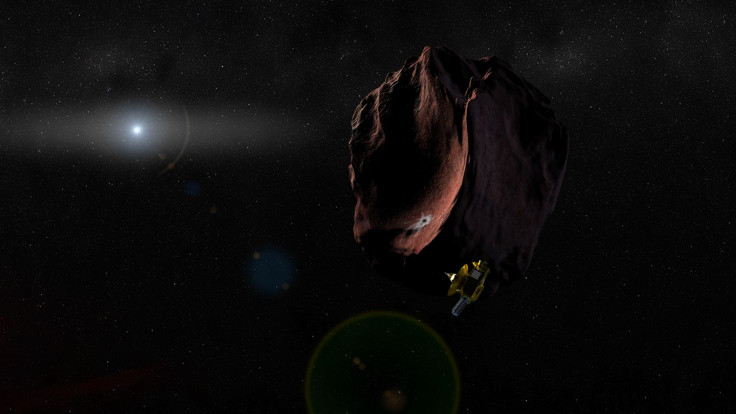NASA New Horizon's Kuiper Belt Target MU69 Could Be Hiding A Moon

Earlier this year, NASA called for people to try and nickname New Horizons’ next flyby target — an object in the Kuiper belt a billion miles past Pluto — officially called 2014 MU69.
Now, scientists have formulated a new theory about the object saying it might be a binary system, with a similar sized moon orbiting it.
NASA’s New Horizons team studied the object with telescopes to obtain more data before the New Year’s Day 2019 flyby.
Though the team cannot say with certitude what the object looks like until they get back images from the probe, observations have suggested that it could either be a single peanut-shaped rock or two bodies orbiting each other.
“We really won’t know what MU69 looks like until we fly past it, or even gain a full understanding of it until after the encounter,” said New Horizons science team member Marc Buie, of the Southwest Research Institute, Boulder, Colorado, in a NASA press release after a American Geophysical Union Fall Meeting in New Orleans.
“But even from afar, the more we examine it, the more interesting and amazing this little world becomes,” he added.
Recently, telescopes across the globe were aimed at MU69 when it was moving in front of a distant background star. The team found a fleeting shadow in the observations from the telescopes. This shadow existed for a very short period of time and after repeated attempts since June, the team was able to capture this effect called occultation during the MU69’s orbit.
According to the team, the most valuable reading came on July 17 from Argentina. The data from these readings led the team to believe that MU69 might be two like-sized objects, or what’s known in space-terms as a binary.
Different data from a 10 July occultation captured by NASA's airborne Stratospheric Observatory for Infrared Astronomy (SOFIA) as it was flying over the Pacific Ocean showed a small dip in the star’s light.

Buie said further analysis of that data, including syncing it with MU69 orbit calculations provided by the European Space Agency’s Gaia mission, opened up the possibility that the “blip” SOFIA detected could be another object around MU69.

“A binary with a smaller moon might also help explain the shifts we see in the position of MU69 during these various occultations,” Buie added. “It’s all very suggestive, but another step in our work to get a clear picture of MU69 before New Horizons flies by, just over a year from now.”
That flyby event on New Year's Day, 2019, will be the most distant exploratory event in the history of human space exploration.
MU69 was discovered in 2014 and is estimated to be around 5.6 billion miles from Earth. It appears to be no more than 20 miles long, or, if a binary, each about 9-12 miles in diameter.
Kuiper Belt objects showcase the remnants of the ancient planet-building age of the universe. These small systems in this crowded part of the universe hold critical clues to the formation of the outer solar system.
“The occultation effort that Marc Buie and his team led for New Horizons has been invaluable in opening our eyes to the very real possibilities that MU69 is both a lot more complex than anyone suspected, and that it holds many surprises for us at flyby on New Year’s Eve and New Year’s Day, 2019,” added New Horizons' Principal Investigator Alan Stern in the press release.
© Copyright IBTimes 2024. All rights reserved.











